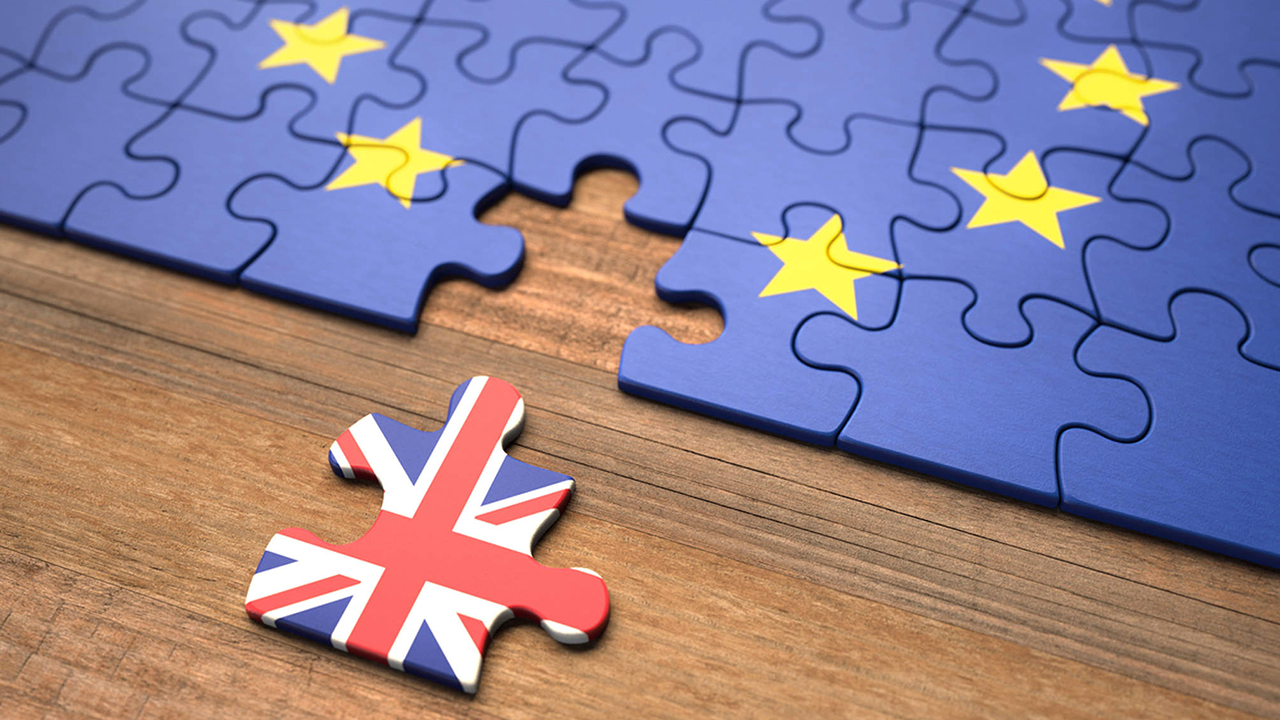
The divorce between UK and EU – what happens to the kids?
9 min read
Those out there who have done some form of basic waltz would have learned the box step, where one moves right, left, forward sideways and exactly back to the start point. Well Brexit, for the past couple of years, has pretty much been like waltzing the box step as opposed to say, Tango, where you actually get somewhere away from your original point. It’s not to say that there wasn’t any progress in Brexit. But there is still much uncertainty in the eventual outcome of Britain’s withdrawal from the European Union (EU) even though the agreement has finally been made on 31 January 2020. It is certainly hard to tell at the moment whether the people of Britain are truly better off with the divorce.
Hard VS Soft Brexit
In order for us to conclude if Brexit could be considered a success, I believe the key factor would be the resulting economic impact. The main debate centers around the choice between a ‘soft’ or a ‘hard Brexit’, so let’s begin with what each of these versions actually entails.
Basically, a hard Brexit arrangement would cost the UK its full access to the single market and the customs union along with the EU. However, Britain would then be able to gain full control over its borders and have complete autonomy in making new trade deals and applying its own laws within the country. That being said, Britain would also have to fall back on World Trade Organization (WTO) rules for trade with its former EU partners. I do think that there are many caveats that come with this freedom and the UK will have to swallow them all in exchange for complete autonomy as a single country standing alone again after close to five decades of being part of the union.

A soft Brexit would leave the UK’s relationship with the EU as close as possible to whatever arrangements they previously had. They would remain as a member of the EU single market or in the European customs union, or both to entitle the UK unfettered access to the European single market. This would reduce the economic impact of leaving the EU. And that’s always good news seeing as to how the UK has a very high trade intensity being a country with little resources of its own. Goods and services would also have ideally been traded with the remaining EU states on a tariff-free basis. Since Britain would remain within the EU’s customs union, exports would not be subject to border checks as well, once again, ideally. However that would also imply that the UK will not be able to pursue a completely independent trade policy. Some of the Leavers might argue that a soft Brexit could possibly defeat the purpose of Brexit altogether.
So what’s the divorce settlement?
The initiation of the divorce of a 47 year-long relationship between the UK and the EU started after the first referendum on 23rd June 2016. Since then, the UK has been tracking back and forth, between the Leavers and the Remainers, unable to settle down on a final decision that could please everyone. But that’s pretty much impossible right? So, after a yearlong transitional Brexit period during which EU rights and obligations still apply to the UK, the new EU-UK Trade and Cooperation Agreement (TCA) was finally meted out on the first day of 2021. Now let’s take a look at what the agreement entails, and doesn’t entail.

Trade
One of the main benefits of the TCA is that there are zero tariffs or quotas on goods traded. This ensures lower prices for consumers, provided the agreed rules of origin are met. Rules of origin determine where goods originate. In other words, it does not matter where they have been shipped from, but rather where they have been produced or manufactured. In order for goods from the UK to be exported to the EU without being subject to custom duties, UK-based exporters have to claim preferential tariff treatment for those goods in accordance with the rules set out in the TCA. The good news is that traders can actually self-certify the origins of the goods sold and enjoy ‘full cumulation’, whereby parties to an agreement can carry out working or processing on non-originating products in the area formed by them. This is beneficial for businesses as it makes complying with requirements and obtaining zero-tariff access easier. There are also specific facilitation arrangements made for more essential or heavily traded goods like wine, organics, automotive, pharmaceuticals and chemicals.
But we must also understand that this kind of additional bureaucracy could very well disrupt the flow of goods and create problems for businesses with just-in-time supply chains. Extra red tape to deal with implies that UK goods no longer benefit from free movement of goods, also in part due to customs formalities and checks on UK goods entering the EU, in turn resulting in more border delays. Furthermore, value-added tax (VAT) and excise duties will be levied on goods like alcoholic beverages and tobacco products due to importations, and the list of items also include online purchases! All these would translate to higher costs for consumers in the UK. To top it off, UK producers wishing to cater to both EU and UK markets must meet both sets of standards and regulations, as well as fulfil all applicable compliance checks by EU bodies.
Australia-UK Free Trade Agreement
Along with Brexit comes the need to have separate agreements with countries that the UK wishes to establish free trades with. As such, a more recent free trade agreement (FTA) was signed between Australia and the UK on 17 December 2021. The FTA allows for improved market access for goods and services, giving Australian exporters a competitive edge when they enter the UK market. This implies that Australian businesses and consumers will also benefit from this greater access to competitively-priced goods and services, latest technologies and innovations. The FTA also serves to strengthen investment flows between both parties, an essential element in this period of economic recovery from the pandemic. Even though Australia was never part of the EU, a new partner during this time of independence is always good for the UK. This agreement will increase two-way trade in goods and services, stimulating growth and job creation for both parties.

Labour
Labour has been a perennial issue for most of the Leavers voting for Brexit. While the flow of human capital across borders certainly facilitates the prosperity of both parties, competition for jobs among the UK citizens have proven to be problematic. With Brexit taking place, I think most of the Leavers are rejoicing as the odds of them being able to get a job locally would very much increase as the labour force from other European countries will be facing more difficulties finding jobs within the UK. For one, there will no longer be any automatic recognition of professional qualifications. Professions like doctors, nurses, dentists, pharmacists, vets, engineers and even architects must each have their qualifications recognized in each Member state they wish to practice in.
While this implies better job prospects for locals in the UK, it also means there could very well be a significant dip in the talent pool within the country. Fortunately, under the TCA, there will be facilitations made for short-term business trips and temporary secondments of the more highly-skilled employees. In light of the ongoing pandemic, medical professionals are certainly in demand. Should unfavourable scenarios play out, such as the advent of another variant (or God knows how many more Greek alphabets we are going to need to use up), the medical teams in the UK might need to execute its full force, or more.

This problem could conceivably be resolved by the Australia-UK FTA. Since the agreement would allow service sectors to flourish given the two-way trading relationships which includes financial and professional services and telecommunications, the potential issue of labour shortage as a result of Brexit could be mitigated. The agreement aims to secure commitments on the mutual recognition of professional qualifications, thus providing greater certainty for skilled professionals entering the UK labour market.
What might worry most of the Remainers would be the loss of free movement of people. UK citizens no longer have the freedom to work, study, start a business or live in the EU. What was initially thought to be a semi-boundless continent where UK nationals could cross freely has in fact now been reduced to a single nation, just like any other. UK visitors to the EU now need a valid passport and visas are required for stays over 90 days in a 180-day period, with additional border checks imposed. However, the TCA has included a non-discrimination clause to ensure equal treatment of EU citizens for short term visas. So I guess there’s at least one plus point here right?
Fishing rights
Fishing rights has also been the talk of the town for a long time to come, and this conflict finally ends with Brexit. The UK is at last an independent coastal State and has complete freedom to decide on access to its waters and fishing grounds. As a result of the UK leaving the common Fisheries Policy, UK fishery products now face customs and Sanitary and Phytosanitary (SPS) checks upon EU entry, which does constitute additional red tape and higher costs for businesses involving the distribution of fish across borders.

However, in return, this new arrangement would ensure sustainable management of shared fish stocks in the EU and UK waters, and the rights and obligations as independent coastal states of both parties will be duly respected. However, to test out if this arrangement would work, there is a transition period of 5.5 years during which reciprocal access rights to fish in each other’s waters remain unchanged, with a gradual transfer of EU quotas to the UK. This will also take into account the need to preserve marine resources and the activities of fishing communities that are reliant on those waters. Fishermen from the EU would really need to make full use of this time to plan out how they would have to remodel their business strategies for the impending future of Brexit so as to counter the lower fishing quotas. It’s hard to say now if these clauses might change but only time will tell.
Have we arrived at a hard or soft Brexit after all?
So here comes the question, have we essentially arrived at a hard or soft Brexit? One year of transition has taken place and the TCA is currently in effect. Since it does allow free trade to be possible with the condition of added red tape, it does appear that the Brexit slants towards a soft Brexit as opposed to a hard one. Britain could overall still benefit very much from this divorce as long as the nation continues coming up with separate agreements for each problem that arises, such as the Australian-UK FTA. While the process of obtaining free trade or better labour conditions are more tedious due to additional bureaucracy, the UK gains the freedom of control it has been trying hard to fight for.
While our discussion mainly focuses on the UK, we should not forget what the EU stands to lose in this whole episode. Based on the 2018 statistics, EU’s Gross Domestic Production in euro amounts to approximately a drop of 2.4 trillion, and a 13% decrease in net population as result of Brexit. The fate of both parties still remains unclear at this stage of Brexit infancy but we will keep you updated on any newsworthy events in the future.

A Trader’s View
From a trader’s point of view, the British Pound has gained some bullish momentum after a December rate hike from the Bank of England (BoE).
As the US Dollar is expected to be strong due to interest rate hike expectations by the U.S. Federal Reserve, pairing the British Pound (GBP) with Japanese Yen (JPY) can be significantly more attractive than pairing it with the U.S. Dollar. The Japanese Yen could be more enticing in terms of weakness as opposed to other currencies backed by hawkish expectations.
As Japanese Yen is a safe haven currency, the risk factor was a reappearance of risk aversion around situations such as the ongoing Evergrande crisis.

GBP/JPY Weekly Chart
As we can see from above, GBP/JPY is currently trading at around 156.31. There are two double bottoms shown in the above chart with necklines at 156.77 (Neckline 1) and 148.50 (Neckline 2).
GBP/JPY has broken Neckline 2 in early 2021 and retested Neckline 2 multiple times, which currently acts as a support zone. A smaller double bottom formation is formed with price currently trading below an immediate resistance zone at 156.77.
If the resistance zone is broken at 156.77, we could possibly see an upside potential of hitting 165.00 (Target 1) in a few months time.
By looking at the bigger picture of Neckline 2 broken, we could possibly see an extension in price to 170.00 (Target 2) in the longer term, placing stop loss below 148.50.
OUR
PARTNERS


GET
IN TOUCH
Come and visit our offices or simply send us an email anytime you want.
We are open to all suggestions from our faithful clients

US
clientcare@arqcap.
com.sg

VISIT
US
68 Duxton Road #03-01 Singapore 089527













